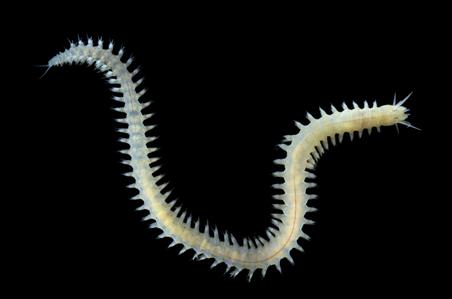General Description
In members of this genus paragnaths are generally present in most areas of the eversible pharynx; Area VI has cones only (no bars, as are present in Perinereis spp). Notochaetae are only spinigers (short-bladed chaetae are absent from the dorsal bundle of chaetae, and simple chaetae with fused articulation are absent ventrally). This species can be distinguished from other local species by having only a single line of at most 7 paragnaths on the ventral part of the oral ring of the eversible pharynx (Area VII-VIII). Body up to about 5 cm long.
Biology
A widespread species found in coastal bays and continental shelf depths throughout Australia, New Zealand and the sub Antarctic.
Habitat
Coastal bays and shallow continental shelf areas, usually at depths less than 100 m but occasionally to 1000 m or more.
Seagrass meadows
Soft substrates
Distribution guide
South-eastern Australia, or south-western Australia.
Species Group
Depth
Shallow (1-30 m)
Deep ( > 30 m)
Water Column
Max Size
5 cm
Commercial Species
No
Global Dispersal
Recorded in Australia
Species Code
MoV 424
Identify
Conservation Status
- DSE Advisory List : Not listed
- EPBC Act 1999 : Not listed
- IUCN Red List : Not listed




